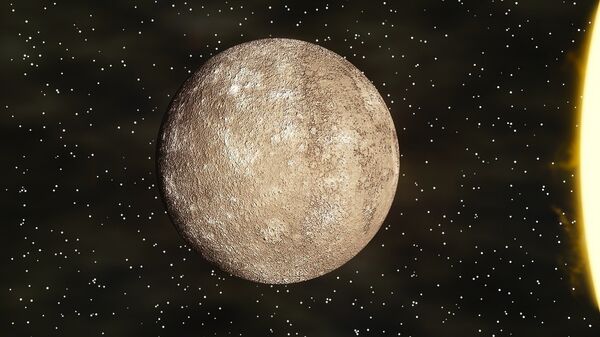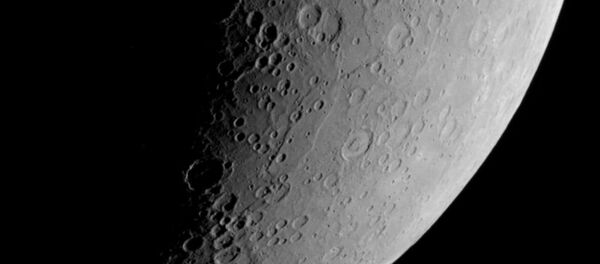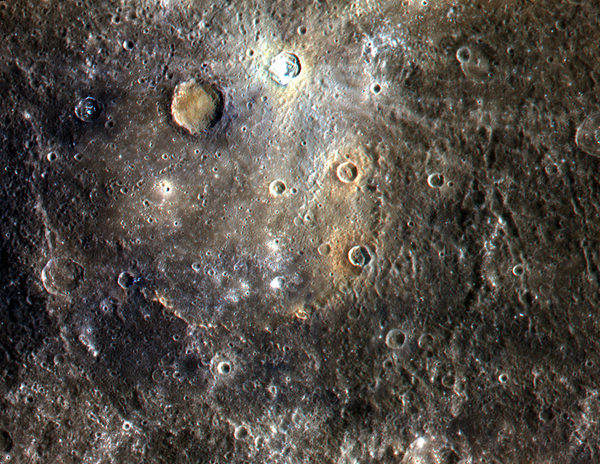If the Earth’s magnetic field weakens as its core cools as well, the same horrible future might be destined for our planet.
NASA spacecraft Mariner 10 and MESSENGER (MErcury Surface, Space ENvironment, GEochemistry, and Ranging) have shed some light on the mysterious planet. Sputnik offers a brief outline of how the planet developed its own magnetic field.

Why the Earth needs a magnetic field
A powerful magnetic source is needed for a celestial body to generate its own magnetic field, known as dynamo mechanism. In the case of the Earth, the magnetic field is induced and constantly maintained by the convection of liquid iron in the outer core.
The magnetic field extends from the Earth's interior into space, where it meets solar wind, a stream of charged particles emanating from the Sun. The Earth's magnetic field is able to deflect most solar wind. Otherwise charged particles would strip away the ozone layer protecting the Earth from harmful ultraviolet radiation.

What makes Mercury different
Mercury is much smaller than the Earth, so the origin of its magnetic field is even more complicated. Mercury’s magnetic field was first discovered in 1974 by space probe Mariner 10. Before discovery it was thought that because of its small size the planet had already cooled over the years, and thus lost its dynamo and magnetic field.
Mercury’s magnetic field is almost 100 times weaker that the Earth’s, but it still exists, because the planet’s core is still liquid and thus can generate sufficient heat.
Iron snowfalls on sulfur beaches
Theories about Mercury’s magnetic field have primarily been based on dynamo theory and this was verified when MESSENGER studied the planet.
Scientists noted that Mercury's magnetic field can be extremely "leaky," as MESSENGER encountered magnetic "tornadoes" caused by numerous "voids" in the planet’s magnetic field allowing streams of deadly radioactive particles to bombard the planet’s surface.
At the same time, the structure of Mercury is unclear as well. The dynamo effect confirms that the planet’s core is liquid. For terrestrial planets their cores consist mainly of iron and sulfur, and the greater the sulfur content the lower the core’s melting point. Mecury’s core has high sulfur content and so it can produce a magnetic field, even though its temperature is no longer as high as it was.
The dynamo effect on Mecury is most probably caused by high pressure on the planet’s core. This creates iron “snow” on the surface and when the liquid mixture of iron and sulfur rises from the core to it generates the dynamo effect on Mercury.
New Horizons
Research published in 2007 suggests that Mercury has a molten core estimated up to 55% of its volume (for Earth this proportion is 17%), surrounded by a 500–700 km mantle. Based on data from the Mariner 10 mission and Earth-based observations, one distinctive feature of Mercury's surface is numerous narrow ridges, extending up to several hundred kilometers in length. These are thought to have been formed when the core and mantle cooled and contracted at a time when the crust had already solidified.
In 2018, Japan and the EU plan to launch another mission to Mercury, which will reach its destination by 2025.
Mercury’s magnetic field is of great interest for science, first of all, because it will allow scientists to explain the mechanisms behind the Earth’s vital magnetic field, which has not been thoroughly studied yet, and understand if the same conditions can threaten our planet. Earth's magnetic field is weakening, according recent research, including data collected by a European Space Agency (ESA) satellite array called Swarm in 2014.
Never miss a story again — sign up to our Telegram channel and we'll keep you up to speed!








